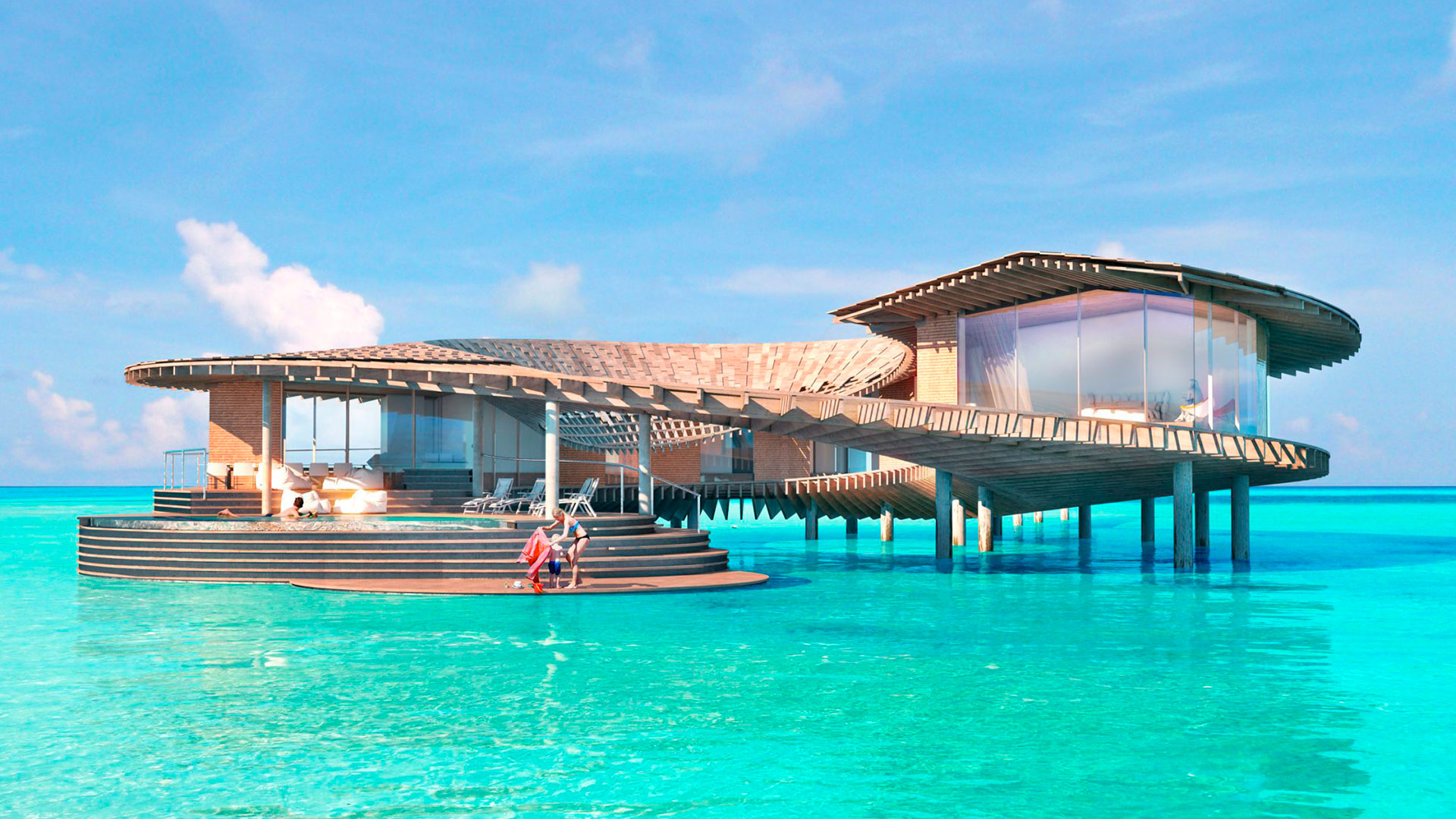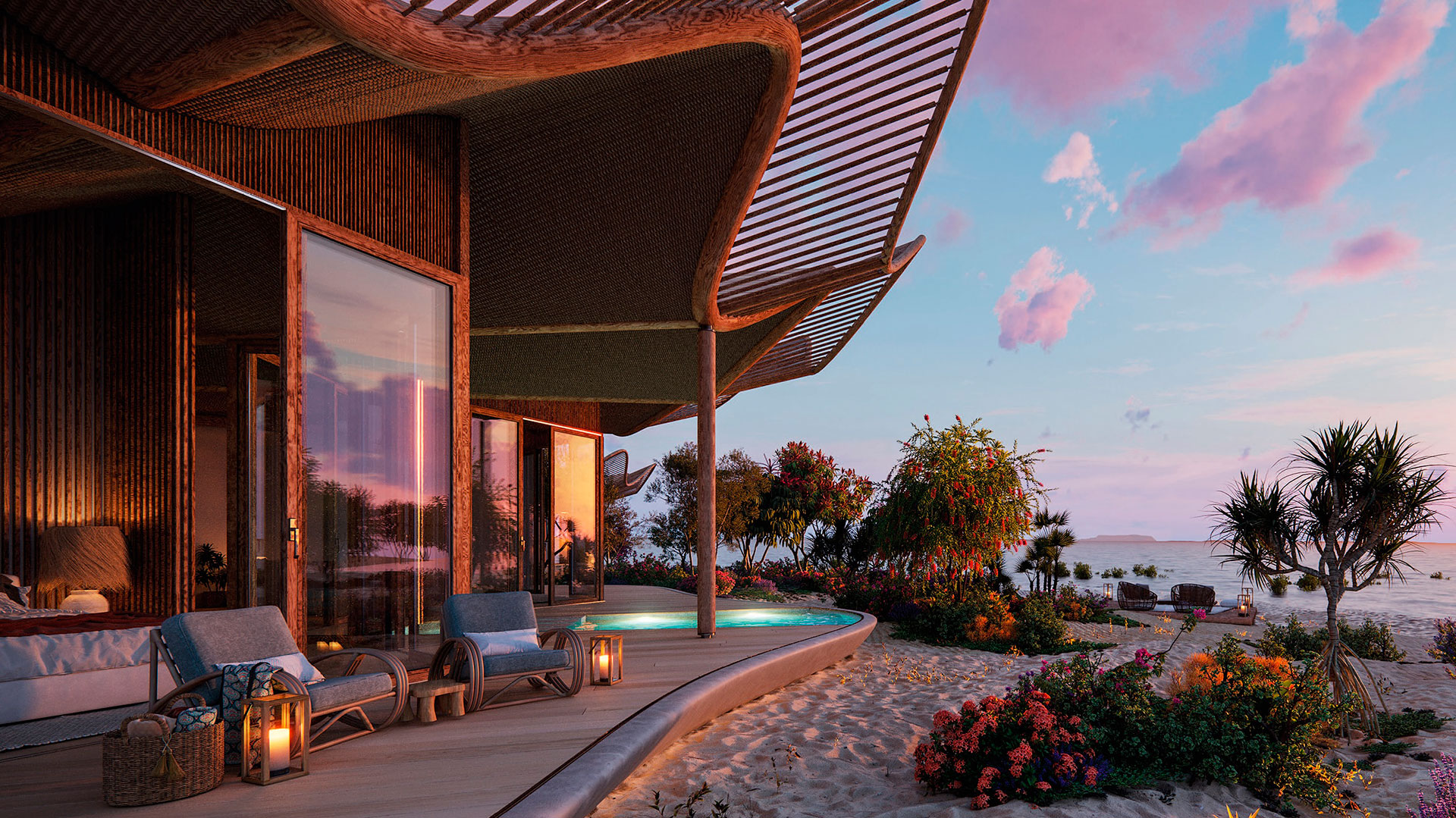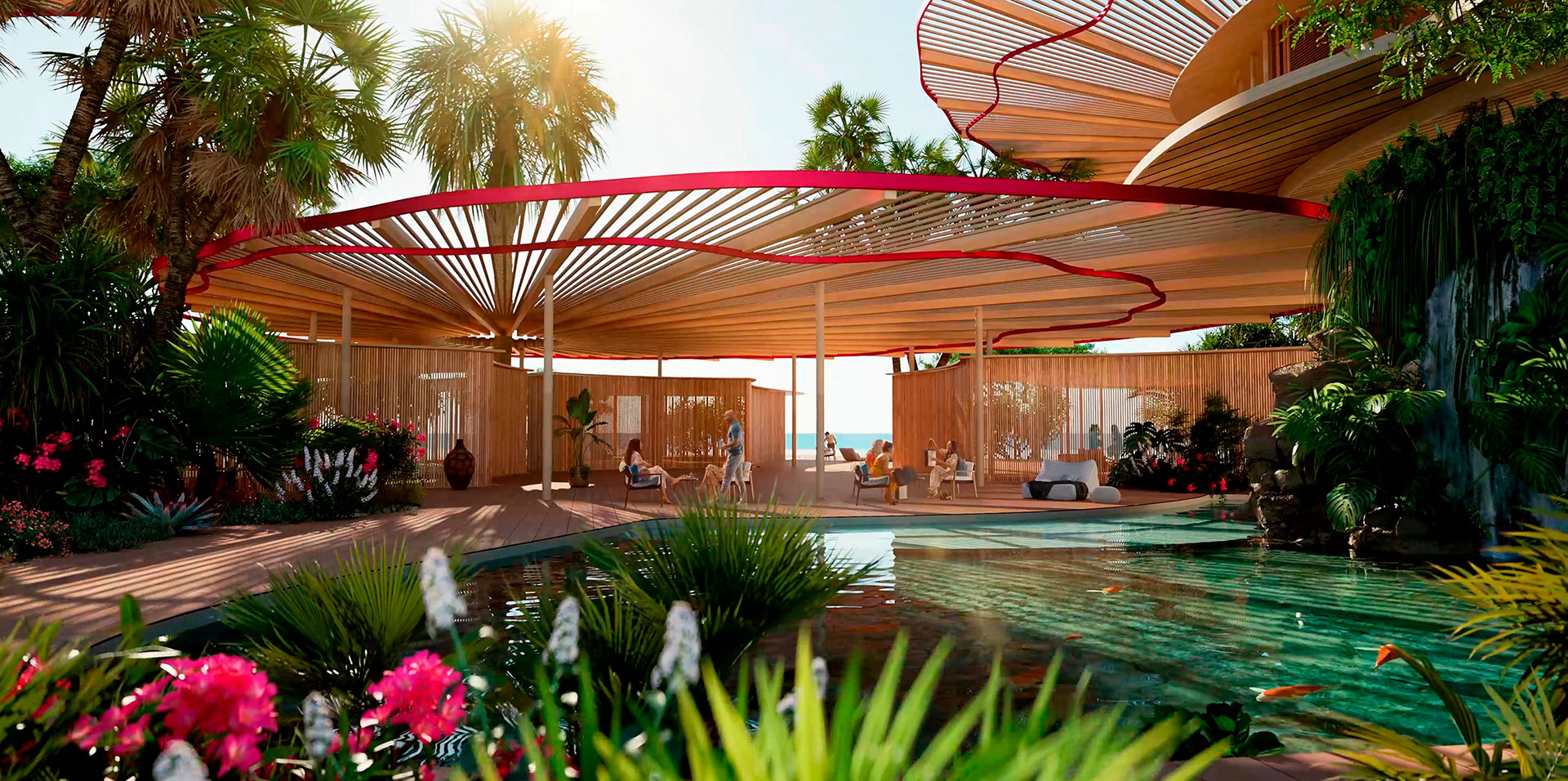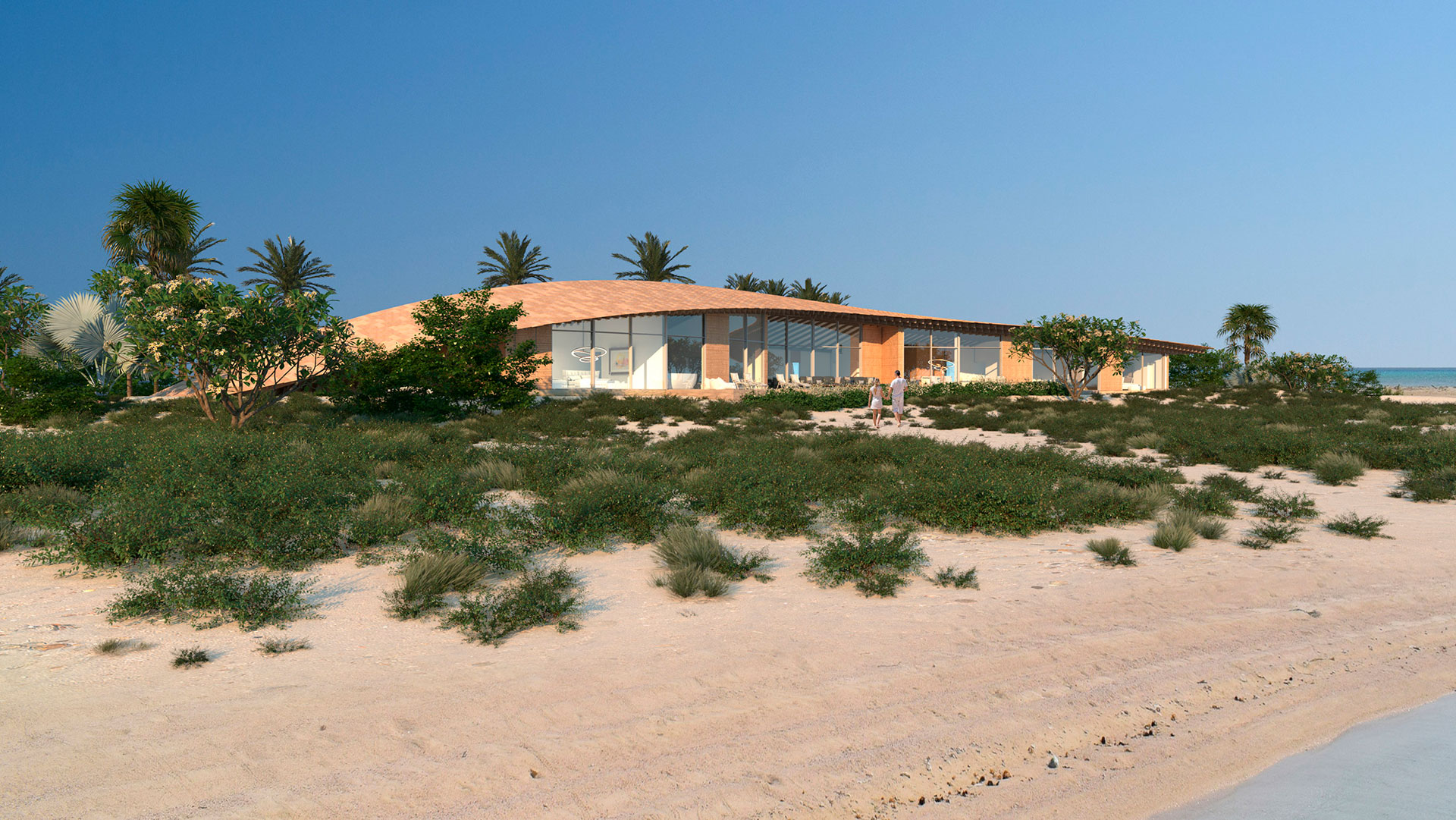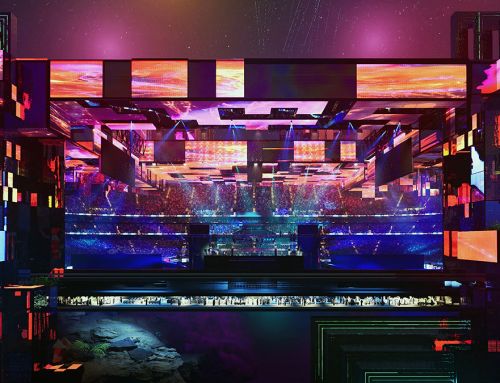In the specialised media of the tourism sector, there is a succession of news on the progress of what is probably the largest tourism development project on the planet: The Red Sea Project. Scheduled for completion in 2030 on 22 of the 90 islands in the archipelago off Saudi Arabia’s Red Sea coast between the cities of Umlug and Al Wajh, the project includes the construction of 50 resorts, with a total of 8,000 rooms, 1,300 residential properties and villas, plus a range of service, leisure and entertainment facilities. The main developments reported in the news relate to conceptual design work by three major architectural firms: Foster + Partners, Kengo Kuma and Associates and Kella Design.
Foster + Partners recently unveiled the first images of some of the units it has been commissioned to design. They consist of 11 resorts grouped under the name Coral Bloom, planned for the island of Shurayrah. It has also presented the designs for the airport that will serve the entire project. Kengo Kuma and Kella Design are working on the design of more than a hundred holiday villas, some on the water and some on the mainland. Although each of the projects has its own particularities, they are all built with sustainability criteria and minimal impact on the coral reefs and the rich biodiversity of the Red Sea waters.
In relation to the part commissioned to Foster + Partners, its particularities include the intervention in the landscape of Shurayrah island, with the creation of a series of lagoons and beaches that will serve as a framework for the villas. The villas have been designed with forms that reproduce the corals present in the site’s marine ecosystem. According to Gerard Evenden, head of the Foster + Partners studio, its vision “is inspired by the natural state of the island, with the hotels designed to give the impression that they have washed up on the beaches and are stranded among the dunes, almost like driftwood”.
As for the Kengo Kuma and Associates part of the project, in declarations that Kengo Kuma made to Dezeen, the flat, gentle dune environment suggested “a design that plays with low, horizontal volumes“, and also the idea of “gently curving the roof of the buildings to establish a harmonious relationship with the terrain”. Thus, the villas in the interior resemble the island’s dunes. On the other hand, those that are planned to be built over the water, follow spiral shapes that offer the tenants 360-degree views of the surrounding landscape. For their location, Kuma adds, “precise bathymetric research was carried out, as well as biodiversity and marine engineering studies, in an attempt to prevent any damage to the coral reef and to avoid interference with ocean currents“.
Kella Design’s designs for the villas are also inspired by the local coral reefs. In a circular system that connects them to the island of Shurayrah, the overwater villas will be made with a polished steel covering that will reflect the water, the sky and “the highlight of the project: the reef below”. The inland villas, on the other hand, are inspired by sand dunes. Each of them will be built separately from the others, with the aim of giving guests a sense of privacy.
Finally, with regard to construction methods, the project managers indicate that they will use as much prefabrication as is feasible and reduce as much is possible the use of concrete. In this way, with volumetric and “panelised” prefabrication, they plan to reduce construction times and waste in the area.
We have selected the following video to give you a complete idea of the project:
Sources and images: Foster + Partners 1, Foster + Partners 2, Dezeen, Killa Design, The Red Sea Project 1, The Red Sea Project 2.
RELATED STORIES
Newsletter

